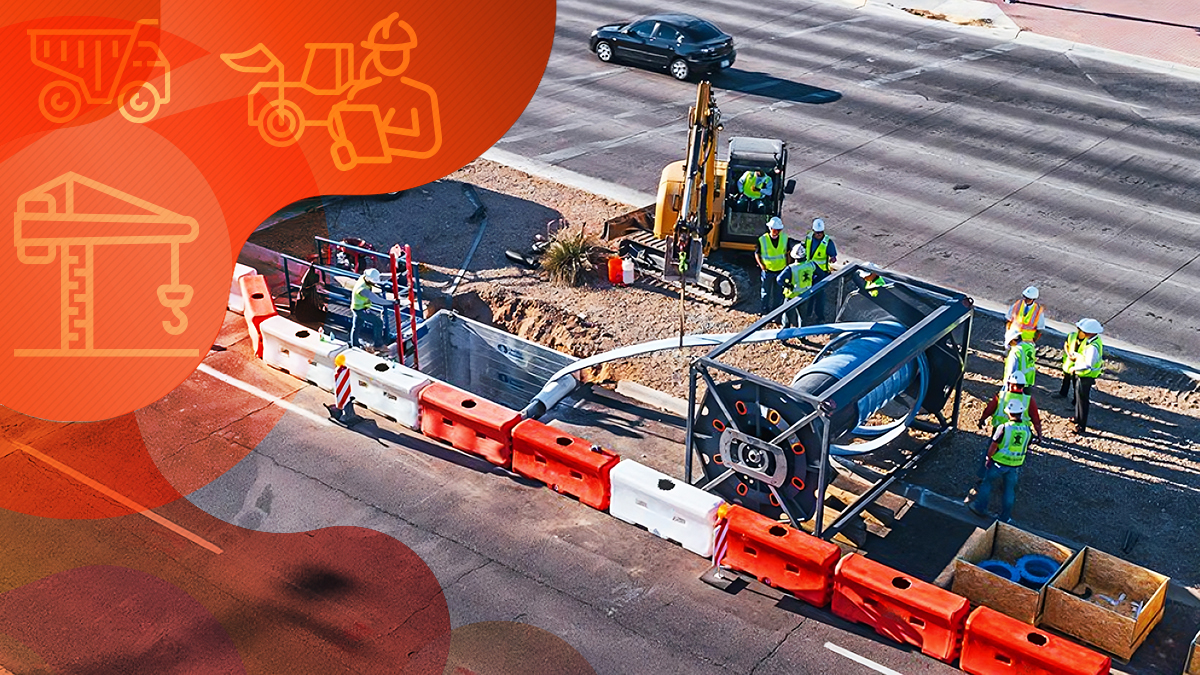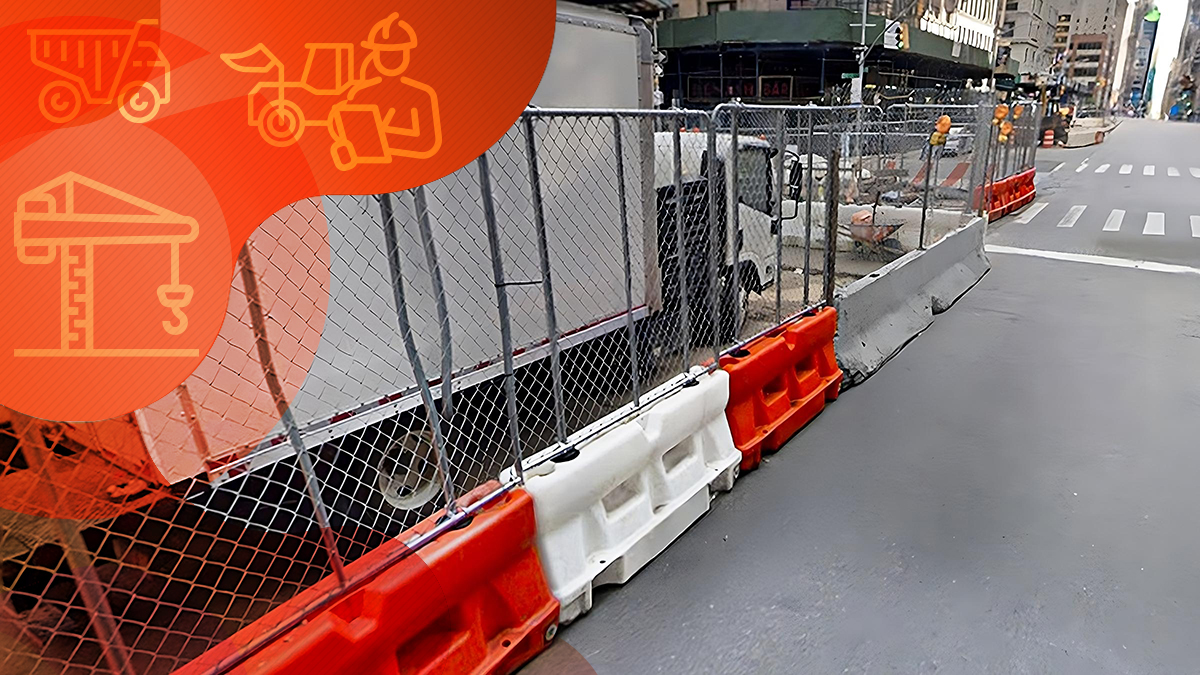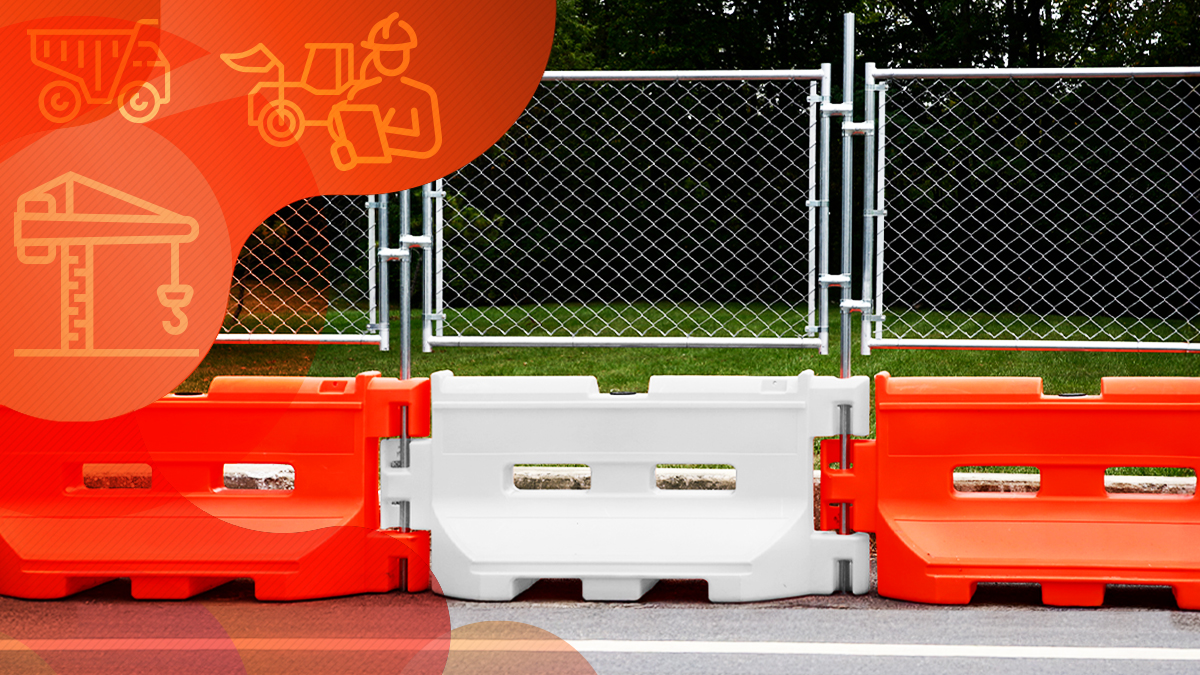How to Set Up Construction Site Fencing: A Definitive Guide

Following best practices when deploying construction site fencing ensures that your equipment and materials are as safe as possible. The key goals are:
- Minimizing access
- Eliminating temptation
- Optimizing long-term productivity
- Utilizing affordable technology
Here are nine tips on how to make everything as effective as it can be.
1. Choose the Right Type of Fencing
The right type of fencing for your job site will depend on the length of the project and the amount of daily activity. Fence panels come in a wide variety of types that go beyond chain link; however, chain link is the most common option.
At Sonco, we offer chain link fence panels that cover perimeters in an affordable way that still creates an effective security measure around construction sites. This is the standard route for temporary security.
But other options include wood panels as well as steel panels. These can be used in combination with chain link as well for added security. Typically speaking, the timber and metal options are for lots awaiting construction or particularly long-term projects.
At the end of the day, the right type of fencing will depend on your unique situation. Most importantly is making sure the fence panels encompass all accessible areas of the site, whether chain link or any other material.
2. Select the Right Fence Height
The higher the fence, the more secure the site.
Of course, when it comes to construction site fencing, we can’t all deploy twenty-foot fencing with barbed wire like a prison yard. Instead, the right height is usually between six and eight feet.
Keep in mind that a six-foot fence can be jumped by a more athletic person, while an eight-foot fence would need to be climbed. The slower the person takes to access the site, the more likely they are to be seen. People know this, so they’re less likely to scale a fence than jump it.
There’s also the possibility of someone cutting through the fence, in which case the height won’t make a difference. But the lower quality the chain link, the higher the likelihood of access. That’s why it’s crucial to get high-quality, high-gauge fencing from a reputable seller.
3. Consider Replacing Sandbags and Cement Blocks
Some contractors believe sandbags and cement blocks are tried and true. And we’re not going to argue with that. But despite their initial affordability, the constant replacements and restocks make them a short-sighted purchase in some cases.
Instead, consider upgrading your fencing weights to ballast stands, like the OxBlock, as well as the BigFoot weight. These are pretty affordable upfront, but the long-term savings is what really make these replacements for sandbags and cement blocks so appealing.
Our block stands and plastic weights also include safety features like high-visibility details and an anti-trip design. While your construction fence stays securely in place, even in high-wind environments, you’re also minimizing your liability.
4. Create Specific Entry Points
Regularly moving fence panels that otherwise serve as your wall can mean entry points change regularly. This is poor practice when it comes to your site security. It can also mean regularly inconsistent fencing that can lead to security breaches.
Instead, create specific entry points. That way, if someone accesses the site elsewhere, it can raise alarms. This is especially crucial for daytime work activity when motion sensors aren’t feasible.
At Sonco, we offer both vehicle gate kits as well as pedestrian gates, and the vast majority of construction sites need both. With the vehicle gate kits, you can actually turn any fence panel into a vehicle entry and exit point.
The biggest thing is making sure everyone exits and enters through the specific gates. No exceptions can be made if you want to keep security consistently locked down.
Read The Article: Your Guide to Construction Site Security
5. If Possible, Make Room for Parking Areas
This isn’t always feasible, but minimizing access to your job site should extend to worker parking if possible. Having a designated parking area with its own unique security measures (such as a camera in case of theft) can mean only essential vehicles can enter the site. The fewer comings and goings, the less likely as security breach.
This also applies to delivery trucks. Specific areas and protocols must be established before third-party vehicles enter the site. Where will they go to drop off specific materials and equipment? Is there an entry and exit route established? Make sure those questions are answered up front.
Figuring it out in the moment is poor practice and can lead to things going missing. But if something goes missing and a plan is in place, it’s simple to trace back the cause – or the missing commodity itself.
6. Use Privacy Screens to Prevent Vandalism and Theft
Temptation and opportunity are two big factors when it comes to spontaneous vandalism and theft.
You’ll rarely have someone casing your site for months on end before making their move. The more likely scenario is that a passerby sees an area ripe for vandalism or material that they can quickly take and sell and act on it.
That’s where privacy screens come into play. Simply minimizing or eliminating visibility can mean there’s no temptations to be seen, and opportunity for any criminal behavior slips right on by.
While there are no solid numbers on how much privacy screens minimize unauthorized access to construction sites, it’s likely significant. And with the incredible affordability of fence screens, there’s no good reason not to deploy them.
Custom Vinyl Fence Screens for OSHA Signage


Kill two birds with one stone by utilizing custom fence screens for your safety messaging. We offer custom OSHA screens that can replace your outdated tin warnings while also creating extra privacy.
This is a method that was utilized by Whiting-Turner, a construction company that deployed custom OSHA screens to increase safety and privacy at several of their sites.
Read Too: Meeting OSHA Requirements For Construction Signs
Advertise and Monetize Your Construction Site Fencing


Another way to more creatively minimize construction site visibility is by utilizing your construction fencing for advertising. This is a way to bring in more revenue while completing a project, and promoting what’s to come is an especially popular route.
For example, the award-winning real estate company Milhaus advertised existing vacancies while building new properties. They’re success in this arena proves definitively that fence panels make for effective billboard space.
7. Implement Additional Security Measures
Temporary fence panels aren’t enough to ensure your construction site is as safe as possible. Part of an effective fencing solution is adding additional security measures that include:
- Motion Sensing Lights
- Video Cameras
- Warning Signage
Rather than motion sensing lights, it may be best to make sure your entire site is well-lit at all times day and night. Although a motion sensor may still be a good method for external entry points.
These days, motion sensor cameras that alert your mobile device are extremely affordable. If movement is detected, your phone will chime and you can instantly livestream the site from home.
Sites willing to spend a bit more money can also implement thermal imaging, fence tampering detection, and other high-tech measures.
But don’t underestimate the power of a warning sign. “No Trespassing,” and, “This Site Is Monitored At All Times,” signage are an incredibly effective deterrent. Combined with cameras and wireless connectivity, and your site is as secure as possible.
8. Add Fencing to Water-Filled Barriers at Roadside Projects


Construction site fencing comes in a variety of forms. Because it’s little more than steel tubes and chain link panels, it can be any size or shape. That makes it one of the most versatile additions to any construction site.
A great example is the water-filled barrier and fence topper bundle deal that we offer for roadside construction projects.
All of the above guidance applies to even highway traffic, as late-night drivers may see materials or equipment that’s vulnerable and simply toss it into their trunk or flatbed. Eliminating the visual temptation will likely mean no one will even know what’s on the other side of the fencing.
9. Partner with a Perimeter Security Expert
All of the above information is general and can be applied to any construction project big or small and short- or long-term. When you partner with a perimeter security expert, you can get proven insight and guidance specific to your site. From the fencing size to the quantity to the extra safety measures, this can go a long way in minimizing the chance for theft or vandalism.
As contractors know, theft goes beyond simply needing to buy more material or equipment. It can mean project delays and unhappy customers, which can have an even more detrimental effect on your bottom line.
Don’t risk it, make sure all your bases are covered and partner with a perimeter security expert today. Worst case scenario, you’ll pick up a few things on your way to buying from somewhere else. There’s no such thing as too much info when it comes to construction best practices.
Trend now

Reducing Impact Damage with Water-Filled Plastic Jersey Barriers
Understanding the effects of barrier materials on vehicles and their occupants can help improve road safety.

Choosing Between Concrete or Plastic Jersey Barriers
Not all barriers are built the same. Here’s what to know before choosing between plastic and concrete.

Advantages of Water Barriers with Fence Toppers
Learn how a fence topper transforms water barriers into a more secure, private, and effective work site solution.


